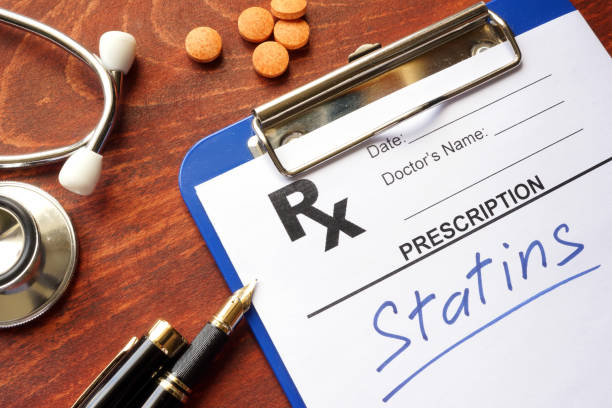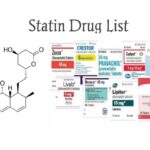Study Highlights the Relationship Between Statin Use and Type 2 Diabetes

In a recent study, researchers have delved into the connection between statin use and the risk of developing Type 2 diabetes (T2D), shedding new light on the potential differences between individual statin medications. Statins are widely prescribed for their ability to lower cholesterol and reduce the risk of cardiovascular events, but concerns about their association with T2D have persisted for over a decade.
The study, analyzing data from the LODESTAR randomized controlled trial, compared the risk of developing T2D between patients taking rosuvastatin and atorvastatin.
The 2012 FDA Warning and Subsequent Research
The concern regarding the link between statin use and T2D emerged over a decade ago, leading to a label change issued by the US Food and Drug Administration (FDA) in 2012. The FDA’s warning highlighted reports of increased risks of high blood glucose and glycosylated hemoglobin (A1c) levels among individuals taking statins. Despite this, the FDA maintained that the cardiovascular benefits of statins outweighed the relatively small increased risks.
In the years following this warning, multiple studies, including meta-analyses and observational research, have attempted to unravel the complex relationship between statin use and T2D. Despite ongoing debate and discussion, the consensus among clinicians and society guidelines seems to support the notion that the cardiovascular benefits of statins continue to outweigh the potential risks of developing T2D.
Practical Guidance for Clinicians
In a recent practice pointer published in the British Medical Journal (BMJ), Dr. Ishak Mansi and colleagues emphasized that the potential risk of developing T2D should not deter clinicians from prescribing statins when they are medically indicated. They also called for further research to address crucial questions, such as whether statin-associated diabetes is reversible upon discontinuation of the medication and whether intermittent use of statins could minimize the risk while maintaining cardiovascular benefits.
Balancing Act: Cardiovascular Benefits vs. T2D Risk
One earlier study, conducted among individuals at high risk for diabetes, observed significantly higher rates of incident diabetes over a 10-year period among patients on placebo, metformin, or lifestyle intervention who also initiated statin therapy. The researchers concluded that while there is a potential modest increase in the risk of developing diabetes with statin use, this risk should be balanced against the consistent and highly significant reductions in myocardial infarction, stroke, and cardiovascular death associated with statin treatment.
Review Title: “Statins May Increase Diabetes, but Benefit Still Outweighs Risk”
Dr. Byron Hoogwerf, Emeritus at the Department of Endocrinology, Diabetes, and Metabolism at the Cleveland Clinic, conducted a recent review emphasizing that statins’ benefits continue to outweigh the potential risks associated with T2D. The review discussed the sparse literature comparing the risk of T2D among specific statins and noted that the risk may depend on the individual, their risk factors, and the prescribed statin’s dose and intensity.
The Latest Study: Rosuvastatin vs. Atorvastatin
The most recent study in this field is an analysis of the LODESTAR randomized controlled trial, which included 4,400 patients with coronary artery disease across 12 hospitals in Korea. This study aimed to compare the risks associated with individual statins. The senior author of the study, Dr. Myeong-Ki Hong from Yonsei University College of Medicine, explained that the study was initiated due to the limited number of studies evaluating clinical outcomes, including the risk of developing diabetes, according to the specific type of statin used.
Comparing Rosuvastatin and Atorvastatin
In the LODESTAR study, patients taking rosuvastatin and atorvastatin for three years were compared. Both statins were effective in preventing myocardial infarction, stroke, and death. However, those taking rosuvastatin had a higher incidence of new-onset T2D requiring antidiabetic drugs (7.2% vs. 5.3%). The study also found that cataract surgery was more common among those taking rosuvastatin (2.5% vs. 1.5%).
Overall Conclusion
While both statins were effective in reducing cardiovascular events, the hazard ratio for new-onset T2D was 1.29 (P = .04), indicating that those taking rosuvastatin had a slightly higher risk of developing diabetes compared to those taking atorvastatin.
Disagreements and Critiques
However, not all experts are convinced by the study’s findings. Dr. Steven Nissen, Chief Academic Officer of Cleveland Clinic’s Heart and Vascular Institute, expressed skepticism regarding the study’s usefulness. He pointed out that the study did not provide valuable insights into the use of these drugs, as it allowed patients to use varying doses, and the reported doses were only median values after three years. Dr. Nissen stressed that the risk of new-onset diabetes with statins is dose-dependent, and the P-values for diabetes incidence were marginal.
Dr. Seth Shay Martin from Johns Hopkins Medicine also commented on the results, indicating that they align with existing knowledge and guidelines. He emphasized the need for caution in interpreting the findings due to the open-label nature of the study and recommended further investigation.
Individualized Risk and Shared Decision-Making
The literature suggests that the risk of developing diabetes with statins may depend on individual factors, statin type, and dosage. The study calls attention to the importance of shared decision-making when considering statin therapy. It should involve screening for baseline glycemic status, discussion of different statin types and doses, and a thorough evaluation of the overall benefits versus the risk of developing T2D. Lifestyle modifications, including weight loss, regular exercise, and a healthy lifestyle, should also be part of the discussion, with or without statins.
Financial Disclosures
Notably, the authors and experts mentioned in the report disclose no relevant financial relationships. However, Dr. Hoogwerf did disclose ownership interests in Eli Lilly and consulting for MannKind and Zealand Pharmaceuticals.
In conclusion, the relationship between statin use and the risk of developing Type 2 diabetes continues to be a topic of interest and debate within the medical community. While the recent study highlights differences between individual statins, further research is needed to provide a comprehensive understanding of these risks. Clinicians should consider individual patient characteristics and engage in shared decision-making to determine the most appropriate statin therapy for each patient, balancing the cardiovascular benefits with the potential risks of T2D.





